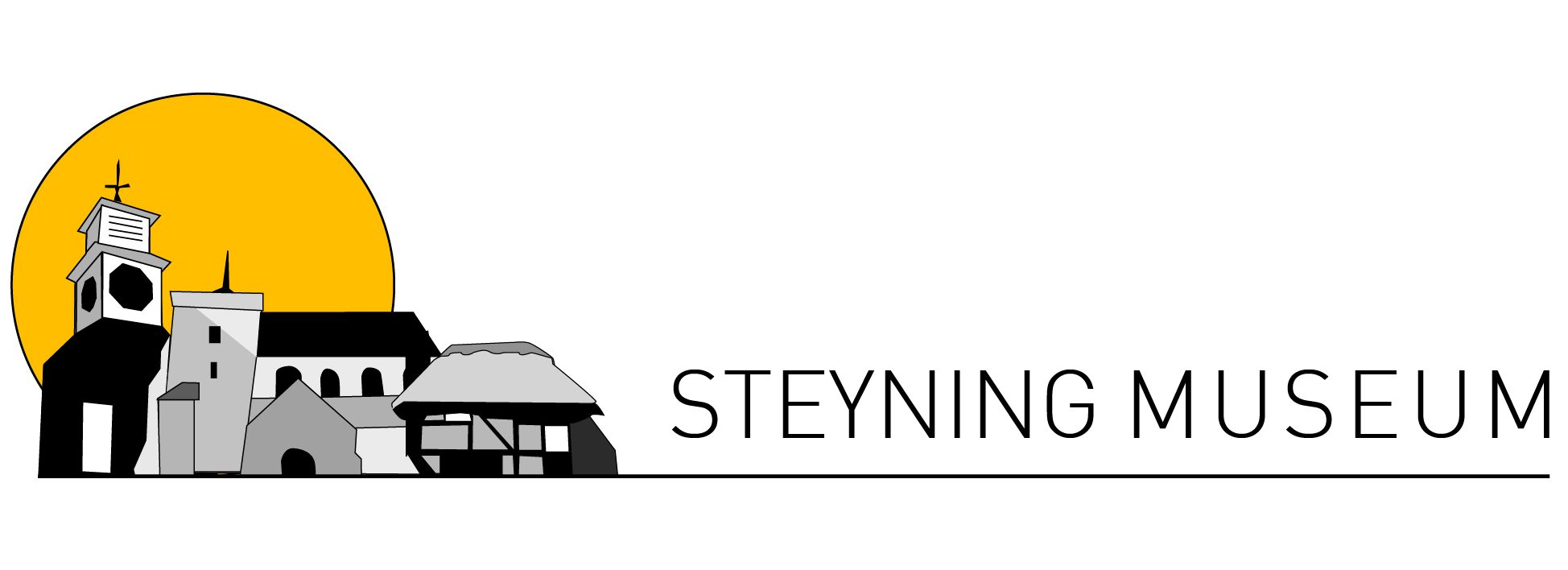by Lynda Denyer
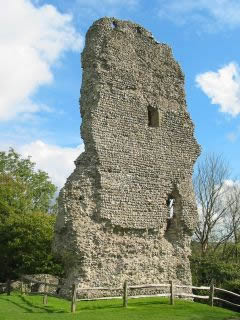
The pretty little village of Bramber was the English headquarters of one of the most powerful and feared medieval families of England and Wales. Strange, but true! Their exploits during 300 years are summarised here, and it’s not a pretty story.
How many people have walked around Bramber Castle on a sunny afternoon and asked themselves, “Who was William de Braose?” The sign says he built the castle in about 1071. I stood in front of it in 1996 with my husband, Doug, and we decided to find out more.
A trip to St Mary de Haura church in Shoreham was even more intriguing. Apparently another William de Braose extended the church, “to atone for the murder of the Welsh princes.” What was our local baron doing in Wales committing murder?
Finding the answers to our questions wasn’t as easy as we thought. There was little reliable information on the Internet at the time and so we recorded our research on a website. Curious local visitors can now find out in ten minutes what we took ten years to discover and our research is still ongoing.
William de Braose arrived in England with William the Conqueror. His mother’s name was Gunnor. She became a nun at the Abbaye aux Dames in Caen, Normandy, which was established by the Conqueror’s queen, Matilda. Some of the property Gunnor gave to the abbey was associated with members of the the Ivry family – Albereda, Hugh and Roger. Emma d’Ivry was the mother of William the Conqueror’s most powerful favourite, William fitz Osbern.
These are the best clues we have as to William de Braose’s parentage. He was entrusted with a key Sussex position at Bramber and land in other English counties, besides Briouze, a strategic location in Normandy. It seems likely that he came from the extended family of the Dukes of Normandy but for genealogists his ancestry is still a frustrating loose end. William probably married the widow of Anchetil de Harcourt, Eve de Boissey, but even this detail remains inconclusive.
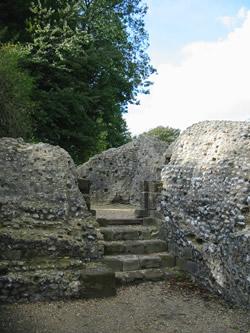
In the Steyning Museum library there is a small book: The Chartulary of the Priory of Saint Peter at Sele. It contains a series of charters relating to the Norman priory in Upper Beeding. The first William de Braose gave many of his churches in Normandy and Sussex to the Abbey of St Florent in Saumur, Anjou. Its Benedictine monks established priories in Briouze and Upper Beeding. Successive Braose lords of Bramber confirmed their ancestor’s gifts in writing, providing us with an invaluable family record.
There are many more sources. Gerald of Wales is one of the most entertaining. He became the Archdeacon of Brecon in 1175 and wrote colourful accounts of the times until his death in 1223. Gerald knew the Braoses as neighbours and friends. They personally endorsed his work.
By 1096 the first William de Braose had been succeeded by his son Philip, who appears in Gerald’s book The Journey Through Wales. Philip ventured into Wales and took Radnor and Builth. He was a crusader and married the Patriarch of Jerusalem’s niece Aanor, daughter of Judhael of Totnes. Philip was the tenth most wealthy layman in England. Gerald tells us little of this but could not resist repeating a Braose family legend.
Gerald says that some time during the reign of Henry I, the Lord of Radnor and his dogs spent a night in the church of St Afan. They had been hunting near Builth. At first light, Philip woke to find that all his dogs had gone mad and he himself was blind.
After years of “tedium and darkness”, Philip grasped an opportunity to redeem his offence against the Church, “for he did not wish his spiritual light to be extinguished as his eyes had been.” He armed himself and travelled to Jerusalem on a strong war horse, led by a group of friends. They took him to the front line of battle where he charged gallantly forward. Philip was immediately struck down by a sword blow and so met an honourable death.
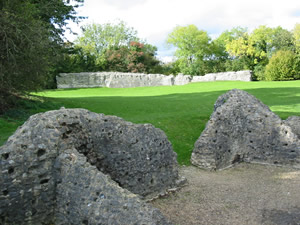
Philip actually died in 1137-9. His son William married Bertha, daughter of Miles of Gloucester. Miles’ heir became a monk and four more sons died in quick succession, leaving Bertha as the unexpected heiress of Brecon and Abergavenny in Wales. By 1175 William and Bertha’s son, also named William, had acquired vast property in England, Wales and Normandy. Welsh folklore still recalls the terror of his reputation.
William’s wife, Matilda de St Valery, held Hay-on-Wye in her own right from the King. As “Moll Walby” the giantess and witch, folklore claims that she built Hay Castle single handed in one night. She carried the stones in her apron but one got stuck in her slipper. She flicked it out over the River Wye three miles away, where it survives to this day as a nine foot tall standing stone at Llowes Church. William is the “Ogre of Abergavenny” who famously murdered the Welsh princes.
Gerald of Wales is the most lurid source for one true story. In 1175 William de Braose was instructed by King Henry II to forbid all Welsh men in his domains to bear arms. William invited the princes and chieftains of Gwent to a feast at Abergavenny Castle to give them the news. The guests politely left their weapons outside but the merrymaking came to abrupt halt when William made his announcement.
The unarmed Welsh guests rose to their feet in protest and William’s men swiftly murdered them all, including Seisyll ap Dyfnwal, Lord of Upper Gwent, and his son Gruffyd. Gerald gives William’s bizarre excuse that he was tossed into the castle moat and only rescued by his men after the terrible event. Nonetheless, William’s men ravaged Seisyll’s lands, pursued Seisyll’s widow and slaughtered seven year old Prince Cadwaladr in his mother’s arms. No wonder William is credited with rebuilding churches to atone for these atrocities and there are more stories which fuelled his brutal reputation.
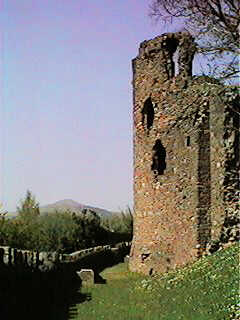
William and Matilda de Braose had at least sixteen adult children. Their marriages allied the family to some of the most spectacular names of the era. Two of their daughters became celebrated anchoresses. The second son, Giles was created Bishop of Hereford by Richard the Lion Heart as William attended the King’s death bed.
King John’s succession was secured, it seems, by William’s prompt and heroic action in dangerous circumstances. The details are lost but John entered England for his coronation via William de Braose’s port of New Shoreham.
William later captured the rival claimant to the throne, Prince Arthur who was besieging John’s mother, Eleanor of Aquitaine at the castle of Mirebeau.
Arthur met a nasty death. Some blamed his captor, William de Braose, when King John raised William up to become arguably the most powerful man in the land. The Lord of Bramber even extended his reach to Limerick in Ireland.
The demise of William and Matilda was a tragic one. According to one story, they knew too much about King John’s personal role in the death of Prince Arthur. King John decided to crush the ageing William and his heir in favour of new men. The King seized Bramber and when the Braoses fled to Ireland, John raised an army to pursue them. William managed to flee to France via Shoreham disguised as a beggar but he died a broken man in 1211. It seems he had been unable to raise enough money to pay the debts demanded by King John and died “of grief” upon hearing of the fate of his wife and son. These alleged debts exceeded the annual revenue of England.
William’s wife and their heir, William, were captured in Scotland and handed over to King John. Many others in the family were rounded up and imprisoned. In 1210 Matilda and William her son were starved to death in a dungeon at Windsor Castle (some say Corfe.)
Bishop Giles de Braose took up arms against King John. Giles gained custody of his family’s lands but died suddenly in 1215 after a meeting with the King. Giles’ brother Reginald continued the fight and successfully defied King John’s pursuit of him. Under King Henry III the Braose inheritance was restored but divided between Reginald and John, the son of the true heir who had been starved at Windsor.
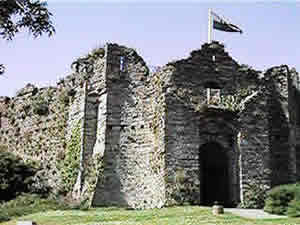
Reginald first married Grace Brewer, the mother of his children and secondly Gwladus Ddu, a daughter of Prince Llywelyn of Wales. Reginald’s son William married Eva, a daughter of William Marshal, the Regent of England and Earl of Pembroke. Eva and William de Braose had four daughters. He succeeded Reginald in 1228 and surprisingly fought against Prince Llywelyn for the King. Unfortunately, William fell straight into the hands of Llywelyn.
During the months of his captivity, William agreed to marry his daughter Isabel to Llywelyn’s son David. Demanding the castle of Builth as the dowry, Llywelyn drove a hard bargain. William paid a friendly visit to the Welsh court in 1230, possibly to discuss his daughter’s wedding, when he was seized by Llywelyn and publicly hanged. The Prince had discovered his wife with William in her bed chamber.
Just imagine what a scandal this was! Llywelyn’s wife Joan was a half-sister of the King. Letters from Llywelyn have survived. One was written to William’s wife Eva. Llywelyn advised Eva that the marriage between her daughter and his son should go ahead, otherwise he “could not restrain his men because of the scandal and our outrage.” It was a threat. The battle was on for powerful men to marry their sons to a Braose heiress and the result was war – in fact wars, murders and vicious feuds for generations.
Many families today are able to claim a Braose ancestry through William’s daughters but not through Isabel and David. Their marriage was childless. The story continues with John, the restored Braose Lord of Bramber. As it happens, he had married Margaret – another daughter of Prince Llywelyn. John’s main Welsh residence was Oystermouth Castle in Gower but he died at Bramber in 1232. “He was drawn at his own horse’s tail and so met a cruel death”, according to the Chronicle of the Welsh Princes. This may be why a ghostly white horse is said to have been seen at night careering around the castle moat.
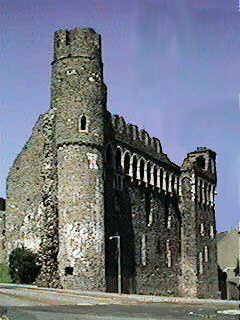
John’s son William was too young to succeed immediately and became a ward of court under King Henry III. William had three wives and several children. His third wife, Mary de Ros, gave evidence at a remarkable hearing in 1307 to determine whether Thomas de Cantilupe, former Bishop of Hereford, should be canonised. She and other witnesses told how a Welsh rebel was sentenced to death by her husband in 1290, just weeks before his own death. Mary begged her husband to show mercy. He refused and supervised a public hanging from the great hall window of his castle in Swansea.
Mary was unperturbed by the hanged man’s gruesome signs of death and sought the help of the dead bishop through a traditional ritual. She measured the man’s body with thread, promising to make wax candles using this same length of thread for the wicks. In the event of an answer to her prayers, she would donate the candles to Thomas de Cantilupe’s shrine. The hanged man duly came back to life! This story, with astonishing details of daily life in the Braose family, is told in The Hanged Man by Robert Bartlett (Princeton University Press, 2004.)
The last William de Braose of Bramber was debt-ridden and plagued by law suits. He was further impoverished by the Welsh wars of King Edward I and the grasping favourites of Edward II. William’s only son (named William of course) died before him and the rights of inheritance passed to his daughters Joan and Alina.
When William died in 1326 he had mortgaged his property to the King’s lover, Hugh Despenser and Alina was a prisoner in the Tower of London. William didn’t live to see Hugh Despenser hung, drawn and quartered, the King deposed and horribly murdered at Berkeley Castle and his daughter Alina restored to her rights. Through Alina the barony of Bramber passed to the Mowbray family and eventually to the Dukes of Norfolk.
An extended version of the Braose story, with sources,
can be read on the “Barons de Braose” website.
